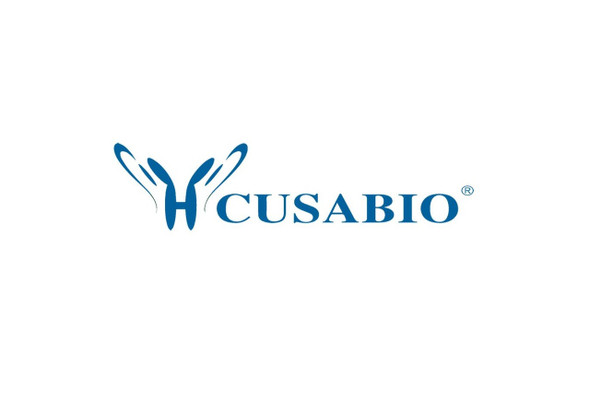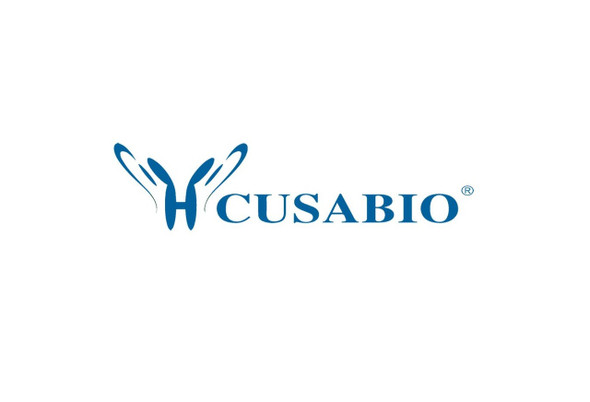Cusabio Human Recombinants
Recombinant Human Ras-related protein Rab-1A (RAB1A) | CSB-EP019167HU
- SKU:
- CSB-EP019167HU
- Availability:
- 3 - 7 Working Days
Description
Recombinant Human Ras-related protein Rab-1A (RAB1A) | CSB-EP019167HU | Cusabio
Alternative Name(s): YPT1-related protein
Gene Names: RAB1A
Research Areas: Transport
Organism: Homo sapiens (Human)
AA Sequence: SSMNPEYDYLFKLLLIGDSGVGKSCLLLRFADDTYTESYISTIGVDFKIRTIELDGKTIKLQIWDTAGQERFRTITSSYYRGAHGIIVVYDVTDQESFNNVKQWLQEIDRYASENVNKLLVGNKCDLTTKKVVDYTTAKEFADSLGIPFLETSAKNATNVEQSFMTMAAEIKKRMGPGATAGGAEKSNVKIQSTPVKQSGGGCC
Source: E.coli
Tag Info: N-terminal GST-tagged
Expression Region: 2-205aa
Sequence Info: Full Length of Mature Protein
MW: 49.5 kDa
Purity: Greater than 90% as determined by SDS-PAGE.
Relevance: The small GTPases Rab are key regulators of intracellular mbrane trafficking, from the formation of transport vesicles to their fusion with mbranes. Rabs cycle between an inactive GDP-bound form and an active GTP-bound form that is able to recruit to mbranes different sets of downstream effectors directly responsible for vesicle formation, movent, tethering and fusion. RAB1A regulates vesicular protein transport from the endoplasmic reticulum (ER) to the Golgi compartment and on to the cell surface, and plays a role in IL-8 and growth hormone secretion. Regulates the level of CASR present at the cell mbrane. Plays a role in cell adhesion and cell migration, via its role in protein trafficking. Plays a role in autophagosome assbly and cellular defense reactions against pathogenic bacteria. Plays a role in microtubule-dependent protein transport by early endosomes and in anterograde melanosome transport.
Reference: The human Rab genes encode a family of GTP-binding proteins related to yeast YPT1 and SEC4 products involved in secretion.Zahraoui A., Touchot N., Chardin P., Tavitian A.J. Biol. Chem. 264:12394-12401(1989)
Storage: The shelf life is related to many factors, storage state, buffer ingredients, storage temperature and the stability of the protein itself. Generally, the shelf life of liquid form is 6 months at -20?/-80?. The shelf life of lyophilized form is 12 months at -20?/-80?.
Notes: Repeated freezing and thawing is not recommended. Store working aliquots at 4? for up to one week.
Function: The small GTPases Rab are key regulators of intracellular membrane trafficking, from the formation of transport vesicles to their fusion with membranes. Rabs cycle between an inactive GDP-bound form and an active GTP-bound form that is able to recruit to membranes different sets of downstream effectors directly responsible for vesicle formation, movement, tethering and fusion. RAB1A regulates vesicular protein transport from the endoplasmic reticulum (ER) to the Golgi compartment and on to the cell surface, and plays a role in IL-8 and growth hormone secretion. Regulates the level of CASR present at the cell membrane. Plays a role in cell adhesion and cell migration, via its role in protein trafficking. Plays a role in autophagosome assembly and cellular defense reactions against pathogenic bacteria. Plays a role in microtubule-dependent protein transport by early endosomes and in anterograde melanosome transport.
Involvement in disease:
Subcellular Location: Golgi apparatus, Endoplasmic reticulum, Early endosome, Cytoplasm, cytosol, Membrane, Melanosome
Protein Families: Small GTPase superfamily, Rab family
Tissue Specificity:
Paythway:
Form: Liquid or Lyophilized powder
Buffer: If the delivery form is liquid, the default storage buffer is Tris/PBS-based buffer, 5%-50% glycerol. If the delivery form is lyophilized powder, the buffer before lyophilization is Tris/PBS-based buffer, 6% Trehalose, pH 8.0.
Reconstitution: We recommend that this vial be briefly centrifuged prior to opening to bring the contents to the bottom. Please reconstitute protein in deionized sterile water to a concentration of 0.1-1.0 mg/mL.We recommend to add 5-50% of glycerol (final concentration) and aliquot for long-term storage at -20?/-80?. Our default final concentration of glycerol is 50%. Customers could use it as reference.
Uniprot ID: P62820
HGNC Database Link: HGNC
UniGene Database Link: UniGene
KEGG Database Link: KEGG
STRING Database Link: STRING
OMIM Database Link: OMIM









